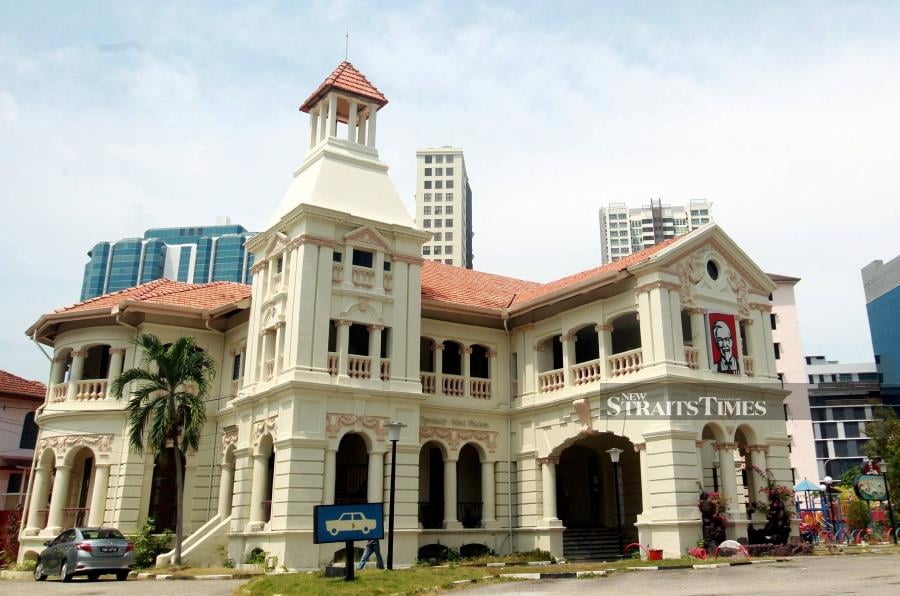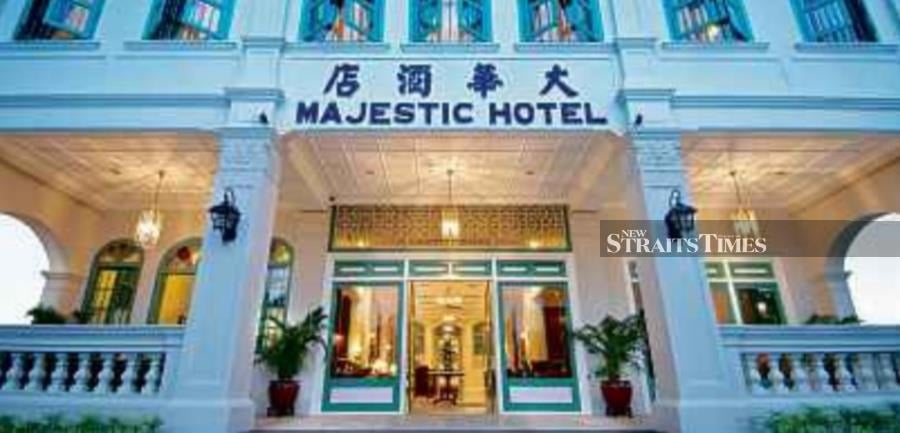
KFC Larut in George Town was closed on March 16 and its owner is said to be selling the land where the outlet is sited. PIC BY DANIAL SAAD
“Limburg”, the 1916-built mansion located at No 52, Jalan Larut in George Town, Penang may remain standing as it is, even if a new owner takes over the site and only the land surrounding it will be developed.
It is understood, the land could potentially generate between RM200 million and RM300 million in gross development value.
The land has a plot ratio of 1:4-5, said people with knowledge on the matter.
The 103-year-old mansion is one of the historic buildings in Penang that was converted into a fast food restaurant (KFC) in 1987.
The outlet, or KFC Larut, as it is affectionately referred to by Penangites is cited on 1.3 acres (58,000 sq ft) of land.
The owner is planning to put the land with the architectural icon up for sale and hence, will no longer be renting the space out to the fast food chain.
It is believed that the owner may sell it for RM850 per square foot (psf), which works out to about RM49.3 million.
The KFC outlet, one of the oldest in Malaysia closed its doors, effective 16 March 2019 after 32 years of operation.
KFC franchise owner in Malaysia, QSR Brands (M) Holding Bhd’s managing director Mohamed Azahari Mohamed Kamil said the branch was closed down as both the building owner and QSR had reached a “mutual agreement” to not renew the tenancy for the building.
Zerin Properties founder and chief executive officer Previndran Singhe said, there is enough land around the mansion to put up at least a building.

YTL acquired The Majestic Hotel in 2006 and began the long rejuvenation project that resulted in the luxurious Majestic Malacca. - THE MAJESTIC MALACCA PIC
"The Limburg mansion limits the land redevelopment potential, which is a good thing in the long run to preserve our rich culture and history. The new owner could integrate the building with the mansion and may use the latter as a lobby or something. But i don't think anyone would transform the mansion into a boutique hotel as economically that is not viable," Previndran told NST Property.
Previndran believes the new owner could do what YTL did when it took over The Majestic Malacca which is preserving the structure and building around it.
The building, which dates back to 1929, was originally a private mansion of a prominent Guangzhao-born rubber plantation owner named Leong Long Man. The mansion remained in the family till 1955 when it was rented out to businessman Lim Fang Heng who converted the building into The Majestic Hotel.
The 24-bedroom hotel, set along the banks of Melaka River was a popular venue for both local and international travellers till it closed its doors in 2000.
YTL acquired the property in 2006 after a public outcry to preserve this historic building, and began the long rejuvenation project.
It was reported that YTL spend USD10 million on restoration work that took 15 months, which resulted in the luxurious, 54-room hotel you’ll find in Malacca today.
The group preserved many of the original structures in the house.
Previndran also gave Penang Times Square as an example of how the century-old Birch House was integrated into the development by Ivory Properties Group.
Birch House, built in 1908 by Lee Chin Ho, a wealthy Chinese tin miner is a heritage building along Dato Kramat Road in George Town. It was built to serve as the office of the tin smelting plant of Escoy Smelting, known in the late 20th century as Eastern Smelting, which was formed in 1897.
The decline of Malaysia's tin industry led to the closure of the tin smelting plant.
The 5.3 hectare site of the tin smelting plant was acquired by Ivory Group around 2003 to develop Penang Times Square, starting 2005 in five phases.
Birch House was given a new lease of life in 2005 with a RM2.5 million facelift, and it is currently the headquarters for Ivory Properties.
History of “Limburg”
Established in 1987, KFC Larut is the first outlet that was set up shop in the northern state.
The KFC branch particularly stands out for its unique architecture - the restaurant itself is housed within a 19th century colonial bungalow built by the British.
Even as the restaurant underwent refurbishments through the years, the building's facade and interior architecture remained untouched barring additional modern touches like LED lights.
The 1916-built mansion is called the “Limburg” and has been classified as a “castle mansion” resembling the chateaux of the Loire Valley during the French Renaissance period, according to author Jon Sun Hock Lim.
In Lim’s book “The Penang House and The Straits Architect 1887-1941”, made available by the Penang Heritage Trust, the Limburg is among the most “outstanding” architectural structures of the Straits Settlements in the 20th century.
Limburg, despite its faux-German name, was once the home of prominent early 20th century Penang's first millionaire industrialist Lim Cheng Teik (1884-1978).
It was designed by architect Henry Neubronner and draughtsman Chew Eng Eam.
Lim was the son of tycoon Phuah Hin Leong (who was born Lim Choo Guan to an impoverished family from the Lim clan, and subsequently adopted by a Phuah family).
Like his father, Lim entered the oil and rice milling business. He became successful early in life, and was elected at the age of 26 as the youngest Municipal Commissioner of Penang. At the age of 33, he became the Chairman of the Chinese Chamber of Commerce.
A small road in George Town has been named after him, called Medan Lim Cheng Teik (between Lunas Road and Pangkor Road), or Lim Cheng Teik Square. It leads from Burmah Road into the residential area developed in the 1950s.
No comments:
Post a Comment